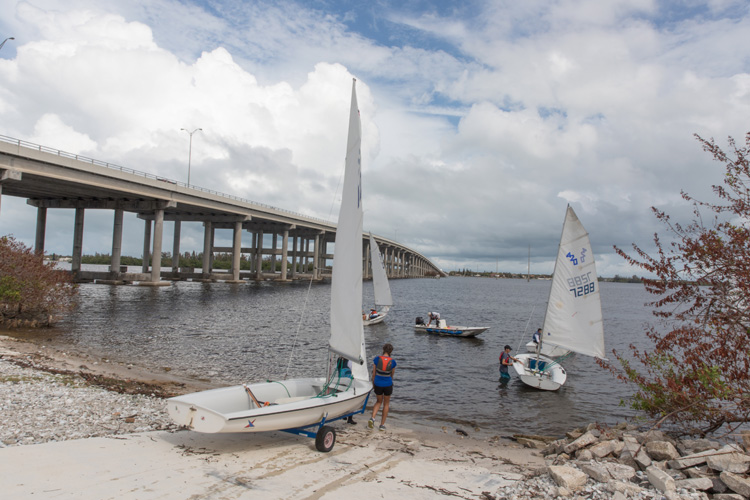A popular sailing nonprofit hoping to snag prime property at “Centennial Place” once the city moves forward with redevelopment plans for the former electric power plant site ran into opposition from the City Council.
The Youth Sailing Foundation of Indian River County recently made a pitch to the council to allow the quickly-expanding organization to build a larger facility on a 3.5-acre sliver of land on the southeast corner of the electric plant property at the west end of the Alma Lee Loy Bridge.
The foundation, currently located nearby at 17 17th Street, has outgrown its current site with the expansion of programs for children with disabilities and several fleets of small sailboats, organization executive director Stu Keiller told the council at the board’s May 21 meeting.
The foundation scoured the city’s waterways and landed at Centennial Place as its preferred spot because it has easy access to a wide section of the lagoon suitable for sailing and is close to where programs already operate, according to Keiller. He proposed constructing a $2.5 million facility at the Big Blue site. The facility would be turned over to the city with an endowment fund to maintain it, Keiller said.
“Our vision is to develop a self-sustaining sailing culture and establish a permanent sailing center on the Vero Beach waterfront,” Keiller said, adding he anticipates the funds for the new facility could be raised in two to three years.
The Vero Beach-owned Centennial Place land is currently occupied by the city’s former electric plant on the north side of the bridge, its aging wastewater treatment facility on the south side, and the former postal annex on the southwest corner.
Big Blue will be demolished sometime after 2020, when Florida Power & Light Co. – which purchased the city’s electric utility system in December 2018 for $185 million – builds a new substation nearby and no longer needs access to the property.
The sailing foundation, which has seen an increase in weekly program participants from 100 to 150 in the past year, has added new boats and activities, including a sailing program for children with disabilities and a shuttle service for homeless children to its programs with newly acquired buses, Keiller said.
But Councilman Harry Howle initially raised concerns about dedicating part of the coveted waterfront site to the sailing group at this time.
“What I’m having trouble swallowing is that what you’re asking for is the prime piece of property on what’s left of the most prime piece of land that we have,” Howle said.
“If your building were there, it would encumber what we do with that property and how we develop that property,” Howle continued. “And I think that would kind of be the backwards way of doing it. I think you most certainly could be part of the planned development of that property, but it would be much better for the community as a whole to have the plan made around whatever we decide is going to be there.”
Mayor Val Zudans echoed Howle’s reservations.
“I am a big fan of youth sailing. I was at your regatta. I believe in it 100 percent and I want to see it happen,” Zudans said. “I am also concerned about having a comprehensive plan and not encumbering the overall idea.”
Keiller acknowledged that dedicating land now to the sailing foundation without a redevelopment plan in place is putting the cart before the horse, but he added it would be the right choice for area youth and an economic driver. The foundation at the very least, would like to be a part of the site’s eventual master plan, Keiller said.
“I know this is valuable land, but our kids are valuable,” Keiller said. “If you put a price tag of a million dollars an acre on the land, which price tag do you put on a child?”
Backup plans for the foundation should the city deny it a spot at the southeast corner of the Big Blue site include a permanent location at the wastewater site or a floating center close by.
Zudans liked the idea of a floating facility, he said.
“There are a lot of potential advantages to going that route. It costs less,” Zudans said. “You probably could raise the money within six months to do something like that as opposed to years from now. And if you got to the point where you exceed your capacity, you can add a second barge.”
“We want you to be a part of this, but we want to make sure we do it in the best way,” Zudans added.

